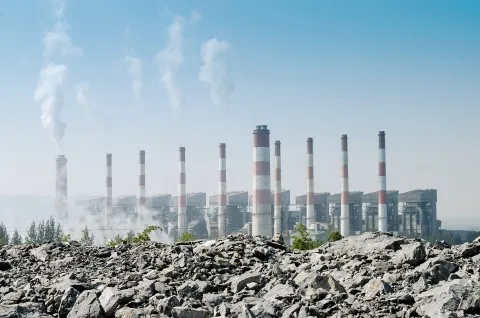
Southeast Asia predicted to be more emissions intensive
This is despite wanting to achieve 23% renewables in the energy mix by 2025.
If Southeast Asia continues to tread its current high growth path, then it should transform into a global manufacturing powerhouse, one that is powered by a greater share of renewable energy as high-emission fossil fuels lose their appeal in the coming decades, according to analysts.
"Consumer demand is on the rise with growing GDP - and the region is poised to become a new significant ‘factory’ or manufacturing hub of the world," said Thomas Leonard, country manager, Thailand & Indonesia at DNV GL – Energy.
Leonard reckoned that despite being a diverse region, Southeast Asia is composed of nations that face similar challenges, including in scaling back coal reliance. Currently, many in the region use coal and biomass for electricity generation, but he expects the region to move in tandem with the expected decline in coal use around the world, albeit at a less steep pace.
"Industrialization and fast improving standards of living has been fuelled largely by coal. Coal’s share will reduce to half of its current levels” in Southeast Asia, said Leonard, noting that the move away from coal will be driven partly by the further development of hydropower, especially in the Mekong area.
Southeast Asia’s rapid urbanisation and the rise of a middle class that is more vocal in reducing pollution in cities will force governments to cut back on coal use. "Increasingly, pressures will arise against pollution, as already is apparent in India and China," said Leonard. "Sustainability demands will be met with little negative side-effects."
And given the declining cost of renewables, Leonard reckoned the region will take a different energy development trajectory than OECD countries - one that leapfrogs to renewables instead of passing through a prolonged reliance on coal and gas power for its electricity needs.
He forecasts fossil fuel consumption in Southeast Asia to grow until around 2030 before it starts to fall off as renewables start to fill the gap. Natural gas production in the region is also expected to decline by the 2030s. Meanwhile, crude oil production will begin to dip in the 2020s, with offshore expected to be cut to roughly a third of its 2015 level by 2050.
Implementation of energy efficiency and renewable energy targets, given more progressive scenarios than business as usual, will reduce oil import dependency among the 10-member Association of Southeast Asian Nations, or ASEAN, said Badariah Yosiyana, Manager of ASEAN-German Energy Programme at ASEAN Centre for Energy.
Yosiyana also expects global oil prices to hike in 2018 to around $56 per barrel and would continue to rise to $70 per barrel by 2030, which could be a key factor in the shifting energy mix in the region.
Solar will start to dominate electricity in the 2040s, according to Leonard, but onshore and offshore wind will also play a major role in the region amid large investments in wind and solar, including small-scale solar. As the shift towards renewables increases its share in the region’s energy mix, the share of fossil fuels will decline. Gas is expected to have the best staying power, although it too will start to see a decline by 2040.
"Southeast Asia will become relatively less energy intensive, but more emissions intensive," said Leonard of the region's projected looming energy reality, also factoring in expectations that the region will be a laggard in electric vehicle adoption compared to the rest of the world.
Yosiyana likewise noted that major renewable investments will flow to ASEAN, citing the first Green Islamic bond to finance sustainable, climate resilient growth by Malaysia. Meanwhile, Indonesia has allocated around $1 billion on clean energy investment.
Citing projections from the AEO5, Yosiyana said ASEAN is set to achieve its 23% renewable energy target in the primary energy mix in 2025, which would entail adding roughly 20 GW of renewable energy this year.
The renewable energy trend in Southeast Asia will also be supported by more energy companies diversifying their core business into renewable energy, the declining cost of renewable energy technologies, and the momentum from China's clean energy commitments. The region has also been a hotbed for exploring emerging technologies, from ocean renewable energy to floating solar PV.








![Cross Domain [Manu + SBR + ABF + ABR + FMCG + HBR + ]](https://cmg-qa.s3.ap-southeast-1.amazonaws.com/s3fs-public/styles/exclusive_featured_article/public/2025-01/earth-3537401_1920_4.jpg.webp?itok=WaRpTJwE)
![Cross Domain [SBR + ABR]](https://cmg-qa.s3.ap-southeast-1.amazonaws.com/s3fs-public/styles/exclusive_featured_article/public/2025-01/pexels-jahoo-867092-2_1.jpg.webp?itok=o7MUL1oO)









 Advertise
Advertise


